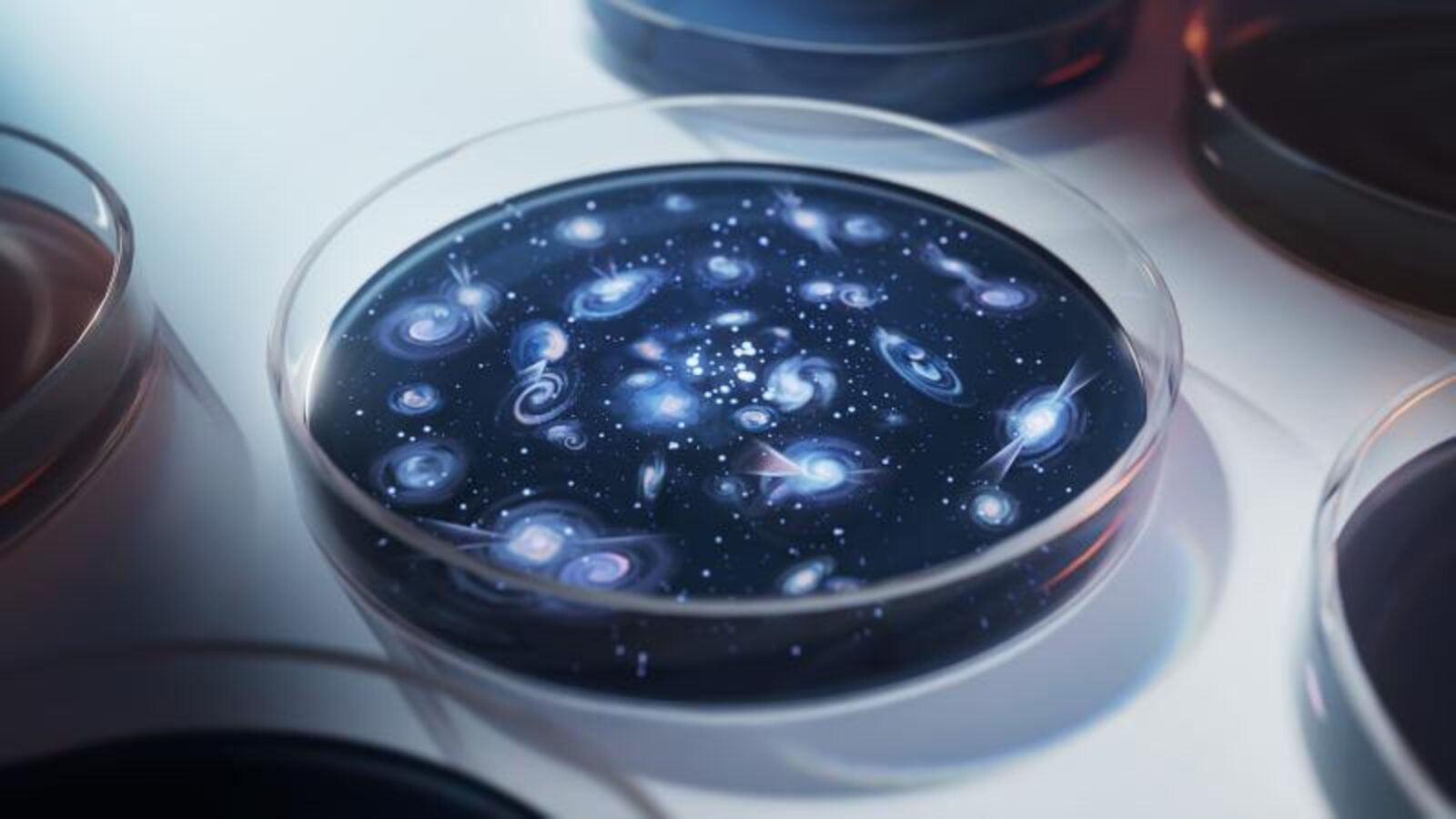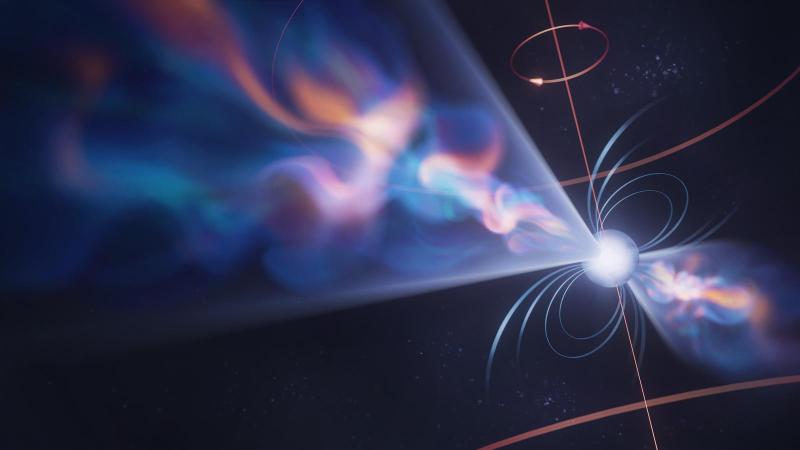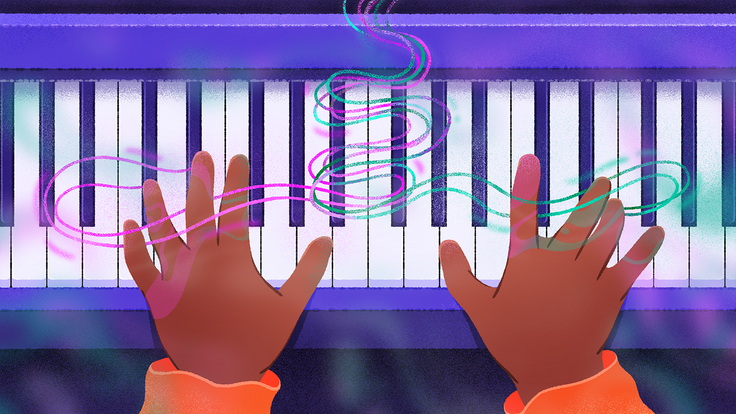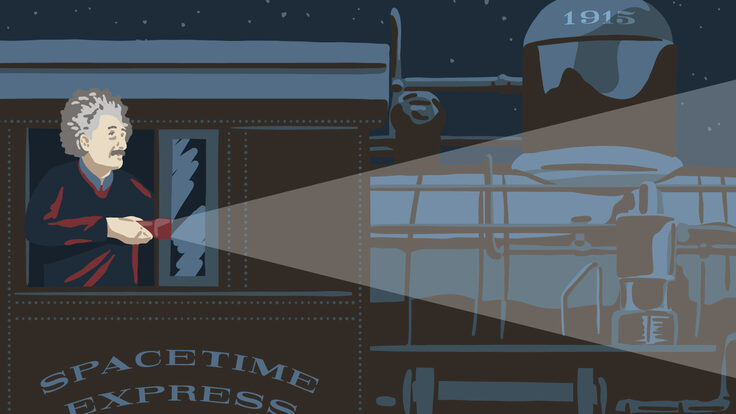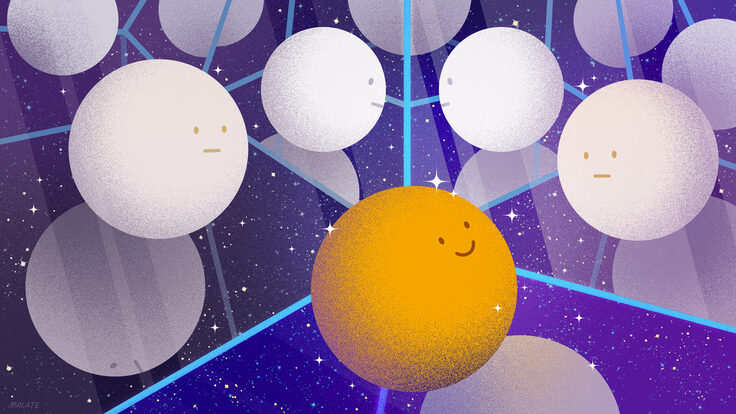There’s a new cosmological background in town. In June, researchers from the North American Nanohertz Observatory for Gravitational Waves, or NANOGrav, published the results of 15 years of observations, finding evidence for a constant, universe-wide hum of gravitational waves.
The scientists at NANOGrav don’t yet know for sure where these gravitational waves are coming from. But if what's past is prologue, scientists need only look to another pattern imprinted across the universe—the cosmic microwave background—for clues as to where research into the gravitational-wave background might be headed.
The cosmic microwave background, or CMB, discovered in 1965, is the remnant of the light released shortly after the Big Bang. As the universe expanded, the wavelength of that light stretched out until it was shifted to the microwave section of the radiation spectrum.
“It is a lot cooler today, but it is still the brightest thing in the sky in the microwave part of the spectrum,” says Zeeshan Ahmed, a scientist at the US Department of Energy’s SLAC National Accelerator Laboratory who leads efforts to research the CMB. “If our eyes could see in microwave, we'd see it as a glow in the sky.”
Ahmed compares the CMB to the heat from a slowly cooling oven.
“It's akin to having an oven on at 350 degrees for baking and you turn it off,” he says. “Twenty minutes later, it's still a little bit warm. There's still a trace left that it was hot at one point because it's slowly cooling down as it has radiated away.”
When scientists first discovered the CMB, all they knew about it was its temperature. In the decades since, researchers have gotten better and better at measuring it, mapping out variations and pinpointing individual sources of its light.
“Nowadays, when we think about the CMB, we think about these beautiful maps of anisotropy”—its unevenness in space—says Sarah Vigeland, a gravitational-wave physicist at NANOGrav and one of the co-leads for the recent research paper announcing the discovery of the gravitational-wave background. “But it took decades to reach that point.
As for gravitational-wave background researchers, “we're right at the beginning,” she says. “We're just starting to see the signal. But in the future, we will be able to do similar things.”
The NANOGrav experiment found evidence of the gravitational-wave background by measuring the precise timing of signals from pulsars. These dense stars, made purely of neutrons, have a strong enough spin and magnetic field to funnel their radiation emissions to their poles. As a pulsar spins and one of its poles faces our planet, telescopes on Earth see a flash of light.
A pulsar’s spin, and therefore the frequency of its flashes, is incredibly constant, so any change in this frequency could be evidence of an external influence.
If a gravitational wave passed by a pulsar, its stretching of space would manipulate the rate at which the pulsar spun, causing changes in the time observed between pulses. By looking at the pattern in the time of arrival of pulses from many pulsars, NANOGrav was able to infer the influence of gravitational waves.
The most likely explanation for the gravitational-wave background, Vigeland says, is supermassive binary black holes: pairs of black holes, each millions or billions of times more massive than our sun, orbiting each other and in the process, warping the space around them. “This is the really exciting thing about doing the science: We've never seen these gravitational waves before, so we now get to figure out what's producing them,” she says.
Another potential source of these background gravitational waves is a mechanism that could be connected to the CMB: cosmic inflation.
Many theorists think that the universe, very early in its history, was quickly and massively stretched out in a process called inflation. The force of this process could have produced its own gravitational waves, which would have polarized the light from the CMB.
Scientists studying the CMB are still searching for signs of inflation.
“Those gravitational waves have always been thought to be pretty hard to detect today, because it would have basically diluted down as the universe has expanded,” Ahmed says. “Unless your technology is amazingly sensitive, it's been thought to be out of reach. But our aspirations as scientists are to go out and measure these things.”
Scientists have studied the CMB to shed light on the state of the early universe, such as its composition, its geometry and whether it is flat. “It is one of the central pieces of data that helps us understand how our universe started and has evolved since,” Ahmed says.
The gravitational-wave background could similarly help the field of cosmology.
Using just light, it’s impossible to see back any further in time than the formation of the CMB, Vigeland says. But sensing gravitational waves from the early universe could pull back the microwave radiation curtain and for the first time, retrieve information from beyond that event.
“The cosmic microwave background is the earliest back we can look with light,” Vigeland says. “Gravitational waves allow you to look even further back to earlier in the universe. It would allow us to see the universe earlier in its history than ever before.”
Like the CMB, the gravitational-wave background has always been there. Now scientists have the capability to observe it.
“The CMB also doesn't change year to year, but our ability to measure it does improve over time,” Vigeland says. “The same will be true for the gravitational-wave background. There's just one gravitational-wave background, but our ability to measure it and map it is going to improve as we observe more pulsars and we get more data.”
That’s good news for scientists studying the CMB as well, Ahmed says.
The next generation of experiments, which will study the CMB with more sensitivity, could bring even more information about gravity in the early universe. “Tying this information to what we're able to glean from the pulsar timing and other kinds of direct gravitational wave searches is going to be fantastic,” he says.
“There's going to be a wealth of data, so I hope in the next 10 or 20 years, there is a lot more progress and we're able to disentangle various contributors to the gravitational-wave background in the universe.”



